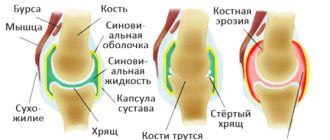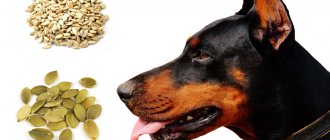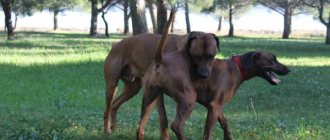The most common ailments
Problems in dogs, like in humans, can arise with all systems of the body. Dog diseases can be infectious, parasitic, surgical or ordinary non-contagious. In all these cases, the pet should receive medical attention.
Surgical diseases of dogs include:
- injuries;
- eye diseases;
- ear diseases.
The most common infectious diseases are:
- parvovirus enteritis;
- plague;
- rabies.
The most common parasitic disease in dogs is helminthiasis. The most common non-contagious diseases of dogs are poisoning and allergies.
What to do if you are injured
Dogs are known to be very active, so they get injured quite often. Owners of such pets should definitely have an idea of how to treat a dog if it has a wound, sprain or bruise.
Dogs usually damage their skin and tissues during fights. If such an injury is detected in an animal, it needs to be given first aid at home and then contact a veterinarian. The wound is first carefully examined, after which foreign objects are removed from it (if necessary). Next, you should cut the hair along the edges of the damaged area and treat it with an antiseptic composition.
If an unsuccessful jump or fall occurs, the dog may suffer a bruise or sprain. Such injuries are usually not too serious, so you probably won’t need to visit a veterinarian in this case. The main sign of a bruise is swelling. Something cold should be applied to the bruised area on the dog’s body for 30 minutes. Then this procedure must be repeated every 2 hours.
If the dog is sprained, apply an elastic bandage and make sure that it moves less in the coming days. On the first day, you can also give the animal some kind of analgesic.
Treatment options
If, based on the symptoms that appear, you understand that the puppy has become ill with enteritis, and there is no opportunity to contact a veterinarian within a few hours, then it is urgent to begin treatment at home.
There are currently no drugs that can destroy the virus. Therefore, in case of illness, symptomatic and supportive therapy is carried out, the main task of which is to give the body time to produce antibodies and destroy the causative agent of the disease.
The basic rules for treating canine enteritis at home are:
- No food . If vomiting or diarrhea begins, it is necessary to stop feeding, since food can irritate the walls of the stomach and intestines, and as it decomposes, it produces poisonous toxins.
- Enemas . As soon as diarrhea begins, it is necessary to empty the intestines of feces to reduce intoxication. Do this procedure until complete cleansing.
- Saline, maintenance and nutritional solutions intravenously . In most cases, the dog dies from dehydration and exhaustion. This can be avoided. A mixture of saline solution, glucose and vitamins will help replenish the salt balance and give energy. You should contact your veterinarian by phone about the specific composition and dosage for your dog. All medicines and products are sold in human pharmacies.
- Symptomatic treatment includes medications against diarrhea and vomiting to support heart function.
- Antibiotics are needed to avoid secondary infection.
In addition to the above measures, your pet needs a properly formulated diet during the recovery period.
Your veterinarian will also tell you this during a telephone consultation. Do not give food too early; the animal should reach for it itself after the crisis has been overcome.
Traditional methods
Veterinarians strongly recommend abstaining from folk remedies when treating this disease. The disease is very young, effective recipes are just beginning to be developed, but the wrong composition of the “medicine” can easily cause harm.
Most often, when a dog becomes ill with this infectious disease, the owners decide to treat it by analogy with rabies - a mixture of vodka and honey due to the similarity of some of the symptoms. This is absolutely forbidden to do! You will only make the condition worse by causing further damage to the intestines.
Recently, in their articles, practicing veterinarians have talked about the possibility of using decoctions of various herbs that soothe the stomach to improve well-being and maintain the body. Also, many breeders recommend pouring a mixture of 1 protein with 3 tablespoons of water or milk into the dog’s mouth 2 times a day. Protein is easily digestible and supports the dog’s strength well. The product is not recommended for use on pets in a difficult situation.
Any traditional methods should be used together with drug therapy. Only then can the dog recover.
The most common eye diseases
Of course, owners of such pets should also know how to treat a dog if it has eye problems. Such diseases occur quite rarely in dogs, but sometimes they do occur.
Most often dogs are diagnosed with:
- turning of the eyelids;
- protrusion of the eyeball;
- conjunctivitis.
Entropion of the eyelids is a hereditary disease in dogs. This disease usually manifests itself in the first year of life. Representatives of breeds with folded skin on the head are most susceptible to it. Unfortunately, there is no answer to the question of how to treat a dog’s eyes at home with entropion. This defect can only be corrected surgically.
Symptoms of eyeball protrusion are:
- abnormally wide palpebral fissure;
- strabismus;
- prolapse of the third eyelid.
This disease can only be cured in a veterinary clinic through surgery.
Many people, of course, are interested in how to treat a dog at home with conjunctivitis. This disease in dogs can develop due to allergen or pathogenic microorganisms getting into the eyes. Conjunctivitis is also often caused by poor diet. With this disease, the dog's mucous membranes turn red and swelling occurs.
For allergic conjunctivitis, the dog's eyes should be wiped with saline solution. You can also use chamomile decoction for this purpose. But how to treat a dog’s eyes with purulent discharge? Antibiotics will help solve this problem. This conjunctivitis is usually caused by harmful bacteria.
Causes of distemper in dogs
Carré's disease or canine distemper develops as a result of the entry into the body of an animal virus, which is characterized by:
- rapid reproduction;
- pathogenic effects on the body;
- the likelihood of damage to several organ systems or a specific one;
- maintaining activity in the physiological secretions of an infected dog for 7 days, longer under favorable conditions.
Dogs that have recovered from the plague develop a strong immunity to this disease, but the chances of recovery and survival in case of illness are low: in puppies they are almost zero, in adults they are 50% in case of timely treatment.
Reference! An infected animal becomes a carrier of the virus and can infect others for up to 3 months after illness.
The causative agent of the disease
Canine distemper is a multisystem disease caused by an RNA virus of the Paramyxoviridae family of the Morbillivirus genus. The structure and characteristics of this pathogen are close to viruses that cause measles in humans and plague in large and small livestock, so it is important to be careful when interacting with sick and recently recovered animals.
The pathogen is resistant to external influences: when heated to 45 °C it dies only after 14 days, to 60 °C - after 30 minutes, treatment with formaldehyde solution, bleach and other disinfectants will lead to the death of the virus only in case of continuous exposure for 1 -3 hours. Heating to 100 °C kills the virus in 1-2 minutes, so it is necessary to treat everything that the sick dog has come into contact with in boiling water.
Which dogs are at risk?
It is believed that only mongrels, puppies and adult pets that have not been vaccinated can get sick. This is only partly true.
Stray dogs are at risk of contracting distemper due to the lack of proper living conditions and unbalanced nutrition; unvaccinated dogs and puppies aged 1 month to a year are also at a significantly higher risk of infection. In addition, animals that have suffered infectious diseases are at risk.
However, the virus can affect an animal of any age; immunity, good living conditions and annual vaccinations do not guarantee safety.
Reference! According to statistics, terriers and boxers are relatively resistant to the virus, while in Pekingese, huskies and shepherd dogs, on the contrary, the disease is more common and more severe.
Routes of infection
Dogs become infected with plague from already sick animals that are carriers of the virus and excrete it in feces, urine, saliva, secretions from the lacrimal and sweat glands, sputum and even dead cells.
A pet can become infected not only as a result of direct contact with an animal that is sick or has recovered no more than 3 months ago. The disease is also transmitted through:
- food and water bowls used by a sick dog;
- the beds and mats on which she slept;
- general housing areas, such as enclosures or carrier bags.
In addition, the pet owner himself can bring the virus into the house on dirty shoes or clothes.
Important! Distemper is dangerous because the causative virus begins to be released from the sick animal even before the first symptoms of the disease appear.
Read Adenoma of the eye (third eyelid) in dogs: causes, treatment and prevention
Ear problems: how to treat a dog
Such diseases in dogs are also quite rare. Most often, owners of these pets are faced with a problem such as ear mites. A dog infected with this parasite begins to itch intensely. At the same time, a large amount of dark plaque accumulates in the dog’s external auditory canal.
How to treat a dog's ears if ticks are detected? There is such a remedy - “Bars”. Before using this drug, the pet's ear canal should be carefully cleaned of plaque with a cotton swab dipped in vegetable oil.
Sometimes dogs develop a disease such as otitis media. In this case, serious hearing impairment is observed, and the animal also experiences obvious pain in the ears. In some cases, a sick dog's lymph nodes may become inflamed.
Otitis media should only be treated by a veterinarian. In this case, specific remedies are chosen taking into account the type of disease. For example, for external otitis, compresses are given to the dog, for purulent otitis, antibiotics are prescribed, etc.
Types of distemper in dogs
The difficulty of diagnosing the disease in a timely manner is due not only to the long incubation period, the duration of which can reach 40 days, but also to the variety of symptoms. There are several types of pathology, each of which has its own symptoms and course characteristics.
Pulmonary form
The first manifestations of this form are associated with the appearance of pus in the nasal passages, which forms “plugs” that prevent the pet from breathing normally. The dog begins to sniffle and sneeze, and first develops a dry and then a wet cough.
This form of distemper mainly affects the lungs of the animal - it develops pneumonia, and wheezing is heard when listening to breathing. In the case of an acute course of the disease against the background of pneumonia, the pet’s body temperature rises to 39.5 °C, which remains at this level for 10-15 days. The dog exhibits tremors, general weakness, and convulsions.
A few days after the temperature rises, ophthalmological disorders are observed: purulent conjunctivitis, keratitis develop, ulcers form on the cornea, and the iris becomes inflamed.
On days 14-20 of the disease, nervous disorders and symptoms of gastrointestinal damage appear.
Intestinal form
When the digestive system is infected by a virus, the dog suddenly loses its appetite, thirst and a white coating appears on the mucous membrane of the tongue, and warts or pits form on the palate, which do not disappear even after recovery.
The animal develops pharyngitis/tonsillitis and symptoms of acute catarrh of the gastrointestinal tract appear, which manifests itself in foul-smelling gray-yellow, and then brown, diarrhea with mucus and blood.
Increased mucus secretion provokes vomiting - first the dog regurgitates light yellow mucus, then blood appears in it. Due to dehydration, the pet may lose consciousness.
If a puppy is exposed to disease while changing teeth, dents and dark spots form on the tooth enamel.
As a result of severe damage to the digestive system, the dog is diagnosed with acute gastroenteritis.
Cutaneous form
The mildest type of the disease. This is due to the fact that with the cutaneous form of plague, the dog’s body temperature does not rise, there is no coughing or sneezing, and there are no problems with the gastrointestinal tract.
The pathology is expressed in the development of plague eczema. This means that red spots appear on the thighs, ears, abdomen, nostrils and area near the mouth. Over time, they turn into shiny blisters with purulent or serous exudate in the center, which burst, leaving brown crusts.
Some individuals develop hyperkeratosis - a strong thickening of keratinized skin in the area of the bends of the joints. There are also cases of weeping eczema in the area of the ear canal, fine focal baldness and cracking of the skin on the pads of the paws.
Mild cases of the disease can be completely cured in 7-10 days; treatment of severe cases can take months or years.
Nervous form
With the neurological variety of plague, the central nervous system is damaged, which can cause irreversible consequences.
The first stage is characterized by constant barking and an excited state of the infected dog. Then she shows signs of aggression, convulsions, involuntary contraction of muscles on the face, paws, and abdominal wall.
Over time, the animal's coordination of movements is impaired, apathy replaces excitement, epileptic attacks are recorded, as a result of which paralysis usually develops of the hind legs and sphincters of the bladder and rectum, due to which the animal begins to limp or drag its limbs and loses the ability to control the process urination or defecation.
Important! If the cardiac or respiratory muscles are paralyzed, the dog dies.
In 50% of cases, the nervous form of plague ends in death; upon recovery, residual effects are observed in the form of difficulty breathing, weakness of the limbs or their failure, involuntary urination, etc.
Mixed form
The most common type of disease in which damage occurs to the nervous system, lungs, intestines, and skin. It is characterized by the manifestation of symptoms inherent in all forms of infection, some are more pronounced, the manifestation of others is not so obvious.
Read What to do if your dog swallows a foreign body
Parvovirus enteritis in dogs
This disease in dogs is considered one of the most serious and dangerous. The following symptoms are observed:
- apathy and lethargy;
- increased body temperature;
- vomiting and diarrhea.
A sick dog experiences severe pain and arches its back when trying to pet it. Dogs infected with parvovirus enteritis require emergency medical care. Unfortunately, this disease is deadly.
As first aid, the animal is given an injection of “No-shpa” and “Cordiamin”. The dog is then taken to the veterinarian. At the clinic, the animal is usually placed on a drip with a crystalloid solution and prescribed antibacterial and antiemetic agents.
Dog rabies
This disease is rare in dogs. However, rabies is the most dangerous infection in dogs. In this case, it is impossible to cure a sick animal - the dog has to be euthanized. Among other things, rabies, as is known, can be transmitted to humans. The main symptoms of this disease in dogs are:
- chills and malaise;
- irritability;
- refusal to eat and sudden weight loss;
- diarrhea and vomiting;
- photophobia;
- increased salivation.
In the later stages of the disease, the dog begins to hide from its owners in secluded places or, on the contrary, becomes very intrusive. After some time, the dog begins a period of aggression: the dog can attack anyone, including its owners. Rabies ends with paralysis and death of the animal.
How do cold symptoms appear in dogs?
The symptoms of a cold are very varied and vague. They can be a sign of a number of other diseases in the dog. A correctly identified cause guarantees a quick cure for the disease. Therefore, the owner needs to monitor the intensity of symptoms, their priority and manifestations in order to tell the veterinarian in detail. What symptoms you should pay special attention to should be considered in more detail.
Temperature increase
A dog's body temperature depends not only on its health, but also on its age, weight and breed. The owner must know the pet’s normal temperature and, in case of illness, monitor changes in this indicator.
Important! The normal body temperature of a dog is within +37.5
…+
39
°
C.
It is not recommended to lower your pet’s temperature with medications
° If your pet's body temperature has risen and he feels unwell, this may be the first sign that the dog has a cold. In this state he gets chills and fever. The dog tries to stay close to the heat source.
Hot and dry nose
A healthy dog's nose is always moist. If it's hot outside, it may be dry for a short time. In normal weather, you can tell by a hot and dry nose whether your pet has a cold or not. If this is the only reason for concern, then you should not make hasty conclusions about a possible illness. It is necessary to understand that a warm and dry nose is a temporary phenomenon that may pass. If a dog starts to get sick, its body temperature rises - this is noticeable primarily from touching its nose with your hand. A hot and dry nose, along with other signs of a cold, are the first symptoms of a possible illness.
Lethargy and refusal to eat
An important symptom in determining whether a pet is sick is its lethargy, inactivity to walks and refusal to eat. The animal does not eat, but drinks more, lies or sleeps, and does not react to stimuli. This symptom is practically not observed with allergies, so it can serve as an indicator in establishing the cause of colds.
Runny nose and watery eyes
When a dog has a cold, there is clear discharge from the nose and eyes. The eyeballs become inflamed, red, and may become watery and itchy. This symptom is very pronounced in allergic reactions. To distinguish a cold from an allergy in this case, the owner should take a closer look and determine the severity of this symptom. If it comes first among other signs, then most likely it is not a cold, but an allergy.
Did you know? A dog can recognize by smell what emotions its owner is experiencing at the moment.
Cough and sneeze
Coughing and sneezing occur with colds with varying intensities. A dry cough can cause the animal to vomit. A persistent cough is a serious symptom that indicates bronchopulmonary diseases.
Sneezing is usually accompanied by nasal discharge. If the dog sneezes frequently and the body temperature does not rise, then it may not be a cold, but an allergy.
Dulling of wool
Usually the dog takes care of the condition of its fur itself. If he is ill, he cannot do this. Therefore, the coat becomes dull, unkempt, and loses its healthy appearance.
Plague
This is another very dangerous disease in dogs. Adult dogs that catch this infection still have a chance to recover, but puppies almost always die. The first signs of this disease may be:
- weakness;
- refusal to eat.
After some time, the animal’s temperature rises strongly, and the dog experiences extreme thirst. Sometimes plague is accompanied by various kinds of complications: hearing loss, enlargement of internal organs, paralysis.
The symptoms of this disease may be different - it all depends on what particular form of distemper the animal has become infected with. So, for example, with a nervous form of the disease, the dog’s coordination of movements may be impaired.
Distemper in dogs is treated taking into account its type. At the same time, there is a set of drugs most often prescribed to animals with the following diseases:
- calcium gluconate - 10%;
- methenamine - 40%;
- glucose - 40%;
- diphenhydramine - 1%;
- sodium chloride isotonic;
- aspirin - 5%.
A mixture of these drugs is prepared immediately before use and administered by infusion over a course of 10 days.
Parasitic diseases: helminthiasis
One of the most common problems dog owners face is, of course, worms. Symptoms of helminthiasis in these pets are:
- lethargy;
- pallor of the skin and mucous membranes;
- itching in the anus;
- sour eyes;
- hiccups and belching;
- parasites or their eggs in the stool.
Only a doctor can prescribe anthelmintics to a dog. When treating a dog at home without the supervision of a specialist, owners may encounter problems such as severe intoxication. And this often even leads to the death of a pet. Intoxication occurs with helminthiasis due to the fact that a lot of parasites in the dog’s body die at once.
Treatment of colds in dogs
Treatment of colds is aimed at activating the body's defense mechanisms, which stabilize the course of the disease and prevent complications, as well as reducing symptoms: high fever, the ability to sneeze and cough frequently, etc.
Mild colds in dogs can be treated at home without going to the doctor. It is better not to delay with serious problems and seek help from a veterinarian in a timely manner. The doctor will prescribe medications that should be given to your pet at home.
Antibiotics for humans are not suitable for treating dogs. This type of medication should only be used when prescribed by a veterinarian, strictly adhering to the dosage and duration of treatment.
A specialist may prescribe the following medications to treat colds:
- Antiviral - contain biologically active substances that are produced by the body's cells in response to viruses, bacteria, and toxins. These drugs are of natural or synthetic origin. They are able to disrupt the replication of the virus. In veterinary medicine, Metisazone, Kemoviran, Izatizone, and Merboran are used.
- Antibiotics are drugs that destroy pathogenic bacteria. Dogs are prescribed drugs of the penicillin or cephalosporin class. Medicines can be in the form of tablets or injections. Prescribed for severe disease with complications.
- Antipyretics - analgin with diphenhydramine or antipyretic suppositories without paracetamol for children.
- Painkillers are drugs that eliminate body aches (Analgin, Sarapin).
- Sedatives - sedatives (Fitex, Valerian, Zylkene).
- Antihistamines - antiallergic drugs (Dectomax, Dexamethasone, Execan, Alergostop).
Did you know? A dog's hearing is 4 times better than a human's. But just like people, with age, pets hear the upper limit of the range worse.
Symptoms of poisoning and first aid
Intoxication in dogs can be food or non-food. Poisoning of the first type most often occurs:
- when your dog eats spoiled food;
- sniffing toxic substances.
Non-food intoxications include:
- bites of poisonous insects and snakes;
- drug overdose;
- gasoline vapor poisoning, etc.
In any case, the main signs of poisoning are:
- vomiting and diarrhea;
- muscle tremors;
- decrease in temperature;
- abdominal pain, cramps;
- unpleasant odor from the mouth.
The first step in case of poisoning, the owners, of course, should stop the animal’s contact with the toxic substance. If the toxin entered the body through the digestive tract 2-3 hours ago, you should try to induce vomiting in the dog. Later this procedure becomes useless.
For acid poisoning, the dog should be given a soda solution, for alkaline poisoning - lemon juice diluted in water. Intoxication caused by eating poor quality food is treated with sorbents. After the dog has been given first aid, it must be shown to a veterinarian.
If your dog is sick
When getting a dog, responsible owners are always interested in how to create the most acceptable living conditions for their four-legged friend - how and what to feed, vaccinate, treat against parasites, what the housing should be like, etc. Some people look for answers in literature and the Internet, while others get this knowledge from friends, breeders or veterinarians. Most often, animals get sick precisely because of violations of one of these factors, or even a complex of factors. But, unfortunately, even with ideal pet maintenance and care, our dogs can get sick. This can be caused by many reasons - hereditary diseases, individual characteristics of the body, and due to errors in vaccination, etc. The main thing in these situations is to be vigilant, not to let things take their course, but to promptly contact a specialist for help. So how can you tell if a dog is feeling unwell?
As a rule, a healthy animal is active, cheerful and playful. If you notice lethargy, passivity and apathy in your pet, you should take a closer look at its behavior. How the dog responds if you call it, how it gets up and how it moves, whether it takes forced unnatural poses. Appetite and thirst are one of the most noticeable signs of a dog’s health to owners. If the animal feels unwell, its appetite decreases or disappears completely. The norms of fluid consumption for each organism are individual and depend mainly on the nature of the diet (when feeding dry food, water consumption is much higher), but sharp deviations (severely increased thirst or refusal of water) are usually noticeable to the owner. Any owner can conduct a primary, simplest examination of a pet: the easiest way to check the color of the mucous membranes is on the gums or the inner surface of the cheeks - normally it should be light or pure pink, any other color (usually whitish, bluish, yellowish, intense red) says about the disease. It is also easy to measure temperature (in animals it is measured exclusively rectally and normally ranges from 37.5 to 39.0 oC), calculate the respiratory rate (normally large dogs have 10-20 respiratory movements in a calm state, in small dogs 15-30, in puppies 40-50), heart rate (the easiest way to calculate using the heart impulse, which is best felt on the left side of the chest, below the shoulder blade - the normal heart rate in dogs ranges from 60 to 120 beats per minute, this is influenced by size of the dog and its age).
It is always necessary to monitor your dog's bowel movements and urine output. The color, quantity, and consistency of stool can indicate problems with the digestive system, just as the color, quantity and frequency of urination can indicate the condition of the genitourinary system. Normally, a dog should defecate 1 to 3 times a day, the stool should be clear, free of blood, usually brown, the act of defecation should not be accompanied by painful sensations (usually dogs whine, groan, and strain for a long time). Normal urine in dogs is light yellow, transparent with a specific odor. You should be wary if the color of the urine has changed (it may become cloudy, rich, brown, or it may become colorless), the frequency of urination has changed (the animal urinates too rarely or too often), the amount of urine (it is possible that the amount of urine may increase or decrease until it is absent). If there have been cases of vomiting, it is necessary to note how often the vomiting is repeated, what comes out of the dog, whether there was vomiting before or after eating and how long after feeding.
The condition of the coat and discharge from the eyes, nose, ears and genitals should also be monitored. The coat should be smooth, clean, without irregularities or bald spots. Discharge from the eyes, nose and ears should be clear and insignificant. Abundant dark, bloody, greenish, white discharge should alert you. From the genital organs of both females and males, abundant purulent, bloody discharge should alert you (may be manifested by frequent self-care of the genitals).
Whatever alarms you about your dog, under no circumstances should you engage in self-treatment! If any behavioral deviations or signs of illness appear, you must immediately contact a veterinary specialist. Only a doctor can adequately interpret the signs of the disease, prescribe the necessary diagnostics, make an accurate diagnosis and finally prescribe the necessary treatment. It is very important to clearly and reliably convey information about your dog’s condition to the veterinarian at the appointment; everything that you noticed and observed at home will help the doctor in diagnosing. After prescribing treatment, the owner must sensibly assess whether he can carry it out at home on his own, or whether it is still worth seeking help, because a simple failure to carry out the prescribed treatment is often dangerous due to serious complications.
In no case should complete recovery be judged solely by the disappearance of signs of the disease.
Only your attending physician can come to the conclusion that your dog is completely healthy based on both clinical signs and the necessary tests. The article was prepared by Sovetin A.O.,
veterinarian of laboratory diagnostics "MEDVET" © 2021 SEC "MEDVET"
Allergies in dogs
Allergies most often occur in purebred dogs. The following symptoms may be observed:
- lacrimation;
- nasal discharge;
- rash, scratching;
- hair loss;
- diarrhea.
The answer to the question “how to treat allergies in dogs” depends on what causes the disease. First of all, owners, of course, need to eliminate the pet’s contact with the irritating factor. Allergies in dogs can occur, for example, to fleas or to a specific type of food. Also, animal owners should visit a veterinarian, who will select the most appropriate antihistamine therapy regimen for their particular case.
Why can a dog catch a cold?
Dogs can get colds. But if the animal has good immunity, no other diseases, good genetic inheritance, then it can easily cope with a cold, if it catches a cold at all. However, there are factors that reduce the pet's body's ability to fight viruses and bacteria. The dog owner should know them in order to prevent his pet from catching a cold.
Did you know? With the help of its whiskers, the dog is able to detect the slightest changes in air currents. Therefore, they help him navigate in the dark.
Hypothermia
The pathological condition of an animal that occurs after prolonged exposure to low temperatures is called hypothermia. This does not mean that you should not take your pet for a walk in cold weather. Walking must be limited, and the animal must be able to hide in the warmth.
Concomitant factors may include:
- wet wool in cool weather;
- draft;
- air conditioner;
- poor diet, which leads to decreased immunity.
As a result of hypothermia, body temperature decreases, which leads to a decrease in the body's protective abilities against viruses and bacteria. To notice the onset of hypothermia in a pet, you should look for a number of signs:
- paw trembling;
- the dog reacts poorly to the owner’s commands;
- Difficulty shallow breathing of the pet.
These signs indicate that the dog should immediately be placed in a dry and warm room, wrapped, fed and body temperature measured.
Predisposed Breeds
Animals of small breeds that were bred by humans practically did not feel the influence of natural selection in their creation. This has led to these dogs having weak immunity and being more susceptible to various diseases.
Did you know? An adult dog has 42 teeth, and a person has 32. On average, an animal exerts a pressure of 145 kg when biting, and a person does not exceed 55 kg.
An important component in predisposition to diseases is heredity. This factor is especially noticeable in popular dog breeds. Breeders, in order to make a profit, very often carry out matings. This wears out the animal’s body and affects the health of the offspring. Such puppies have weak immunity, so they often suffer from colds.
Elderly age
Older pets get colds much more often than younger ones. This is due to a deterioration in the functioning of all body systems and, as a result, a decrease in immunity. It is more difficult for an old animal to fight infections, so the owner should take this into account and treat the pet more carefully.
Poor living conditions
The intensity of colds directly depends on the conditions in which the pet is kept. The animal should not be in a damp and cold room. The owner is obliged to provide adequate nutrition and a warm place to sleep. Keeping a dog in a draft or near heating devices is unacceptable. It is also important to comply with all preventive measures to prevent the disease.
Contact with infected animals
During group walks, your pet should avoid contact with dogs that have symptoms of a viral disease. This cold can be transmitted from a sick animal.
Important! If the owner is sick with ARVI or the flu, and the dog is in constant contact with him, there is no need to worry. Bacterial and viral infections, as a rule, are transmitted from animal to animal or from person to person, so the owner cannot infect a pet with a cold.
Parasite infestation
Fleas, helminths, and ticks are carriers of infection and contribute to weakened immunity. Therefore, preventive control of parasites should be periodic. Don't ignore this advice.
Allergy
Allergic reactions weaken the animal’s immunity, as a result the dog may catch a cold more quickly. In addition, it is very difficult for a dog owner to distinguish an allergy from a cold based on symptoms. Swelling, discharge from the eyes and nose, and sneezing can occur both with allergies and colds. It should be remembered that allergies are primarily itching, and a cold is lethargy and aches throughout the body.
What Do Pet Dogs Treat?
If dogs have any diseases, it is imperative to provide them with medical care. But dogs themselves can have a beneficial effect on the health of their owners. By communicating with such a pet, you can get a lot of positive things, and this becomes a serious protection against various kinds of stress and other nervous disorders.
Some people are interested in whether dogs cure rheumatism. The fur of these animals can really help with this serious disease. It is also used to treat diseases of the joints, kidneys, etc. Very often, medicinal socks and belts are knitted from dog wool. Daily walks with your pet in the fresh air can also have a beneficial effect on a person.
How to protect your dog from colds?
Firstly, to prevent the dog from catching a cold from the slightest exposure to a draft or unfavorable weather during walks, it is recommended not to surround the puppy with unnecessary care. The body must be moderately hardened.
A strong body will not only not be susceptible to colds, but in the event of a possible illness, it will be ready to cope with it on its own, without serious symptoms and consequences.
When accustoming your puppy to walks, gradually increase their duration, so that he will get used to and adapt to temperature changes.
It is also very important that the dog eats well. With a balanced diet and hardening, your dog will receive strong immunity and unshakable health.











